This article was medically reviewed by Luba Lee, FNP-BC, MS. Luba Lee, FNP-BC is a Board-Certified Family Nurse Practitioner (FNP) and educator in Tennessee with over a decade of clinical experience. Luba has certifications in Pediatric Advanced Life Support (PALS), Emergency Medicine, Advanced Cardiac Life Support (ACLS), Team Building, and Critical Care Nursing. She received her Master of Science in Nursing (MSN) from the University of Tennessee in 2006.
wikiHow marks an article as reader-approved once it receives enough positive feedback. In this case, 88% of readers who voted found the article helpful, earning it our reader-approved status.
This article has been viewed 135,970 times.
Sprained fingers are relatively common injuries in sports like football and basketball. Fortunately, although a sprained finger can be uncomfortable and get in the way of day-to-day activities, it’s not a serious injury.[1] You can tell if your finger is sprained by seeing if it cramps or turns red and by examining whether or not it’s swollen. If you’re struggling to figure out if your finger is sprained or broken, make an appointment to see your doctor.
Steps
Inspecting Your Finger Visually
-
1Look for swelling on the sides of your finger if it was bent sideways. Swelling is one of the primary signs of a sprained finger. If your finger was bent uncomfortably far to one side or the other, the ligaments connected to the finger’s bones may be stretched or torn.[2]
- The tendons will swell on the side opposite the way in which the finger was bent. So, if your finger was forced too far to the left, look for swelling on the right side of the finger.
-
2Inspect the bottom of your finger if the finger was bent backward. Notice if the soft underside of your finger seems puffier than usual. If so, this is a sign that the finger has been sprained and that the ligaments near the base of your finger have been stretched or torn.[3]
- If you’re not sure whether or not the finger is swollen, compare it with the corresponding finger on your other hand.
Advertisement -
3See if parts of your finger have turned a shade of red. Along with swelling, the most notable sign of a sprained finger is red discoloration. Inspect the sides and bottom of your finger. If the finger is more red than the surrounding fingers, it’s likely sprained.[4]
- The degree of redness will vary with the severity of the sprain. So, if your finger is slightly sprained, the skin covering the sprained tendon may be slightly pink.
- If the sprain is severe, a large portion of the finger may be notably bright red.
Noting Painful Symptoms of a Sprain
-
1Try to use the finger normally after the injury. If you’re concerned that your finger may be sprained, try to use it as you typically would for the next day or 2. If you notice that the finger doesn’t function normally, doesn’t bend, can’t hold weight, or is too painful to use, it’s most likely sprained.[5]
- For example, if you find yourself unable to pick up a gallon of milk using your hand with an injured finger, you’re probably experiencing a sprain.
-
2Pay attention to cramping or spasms in your finger muscles. When a finger is sprained, its muscles are often affected. Watch your finger as you go about your daily routine, and take note of any painful or uncomfortable cramps. Cramps may cause your finger to bend itself into a twisted position. Sprains are also commonly accompanied by muscle spasms.[6]
- So, if you notice that your finger is twitching or bending on its own, it’s probably sprained.
-
3Note how much pain you feel in the sprained finger. Any finger injury will be painful, but the degree of pain you feel will indicate how seriously the finger is sprained.[7] If the finger still hurts 48 hours after the incident, it’s most likely sprained, since pain from a lesser injury should go away within 48 hours.
- If the pain is sharp and severe, you’ve either seriously sprained or broken your finger.
-
4Straighten your finger and see if the tip stays bent. If your sprained finger was impacted head-on, it may be compressed and have potential joint damage in addition to a potential sprain. This condition is known as a “mallet finger.” So, if you try to straighten your finger and the tip stays bent at an angle, it will need to be professionally splinted.[8]
- Unless it’s accompanied by a sprain, mallet finger is often painless.
Seeing a Doctor to Diagnose Your Finger
-
1Visit a doctor if your finger is still swollen, bruised, or painful after 48 hours. If pain from a sprained finger is severe or lasts for more than a couple of days, schedule an appointment with your general practitioner.[9] They’ll be able to assess the damage to your finger and determine whether or not the ligaments are sprained.
- Go to a local Urgent Care center or Emergency Room if you’re unable to bend your finger after the incident or if the pain from the injury prevents you from going about your daily routine.
-
2Describe your finger injury to the doctor. Tell the doctor when and where the finger was injured. Also describe how you sustained the injury (e.g., if you caught the ball wrong in a game of baseball). Mention what angle your finger was at when it was injured and what direction the injury came from. Tell the doctor how severe the pain is, and whether it’s become more or less painful with time.[10]
- Also make an appointment if you have a mallet finger, since the condition needs to be treated by a medical professional.
-
3Request an imaging scan if your doctor can’t visually confirm a sprain. The doctor will most likely perform an X-ray or an MRI scan. Both of these scans allow the doctor to get a clear image of the bones and ligaments in your finger. An MRI in particular will allow the doctor a clear look at the ligaments inside your injured finger. After viewing the scan results, the doctor will be able to diagnose whether or not your finger is sprained.[11]
- Neither the X-ray procedure nor the MRI procedure should cause any pain or discomfort.
References
- ↑ https://www.verywellhealth.com/sprained-finger-2549470
- ↑ https://www.hss.edu/playbook/so-you-jammed-your-finger/
- ↑ https://www.hss.edu/playbook/so-you-jammed-your-finger/
- ↑ https://www.hss.edu/playbook/so-you-jammed-your-finger/
- ↑ https://www.nhs.uk/conditions/sprains-and-strains/
- ↑ https://www.nhs.uk/conditions/sprains-and-strains/
- ↑ https://www.hss.edu/playbook/so-you-jammed-your-finger/
- ↑ https://www.hss.edu/playbook/so-you-jammed-your-finger/
- ↑ https://nyulangone.org/conditions/hand-sprains-strains/diagnosis
About This Article
A sprained finger can be uncomfortable and a little inconvenient, but fortunately, it should heal quickly. Common signs of a sprain include swelling, tenderness, and redness. Your finger might not bend fully and it might hurt when you try to use it. You may also have cramps or spasms in your finger muscles. If your finger still hurts after 48 hours, it’s likely sprained, since lighter injuries would probably have faded by then. If you experience any of these symptoms, visit your doctor so they can figure out what’s wrong and give you an x-ray if they need to. To learn what happens to your ligaments when you sprain your finger, and more tips from our Medical co-author, read on!
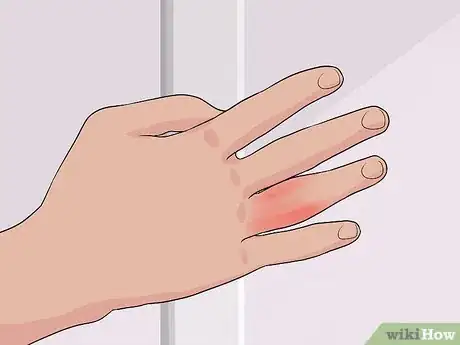

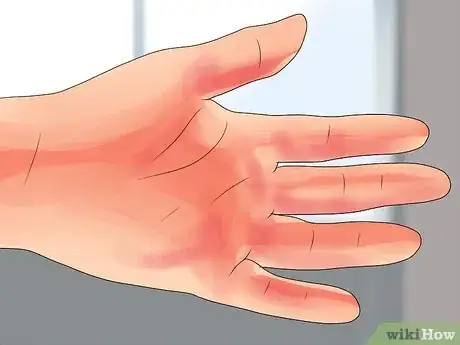

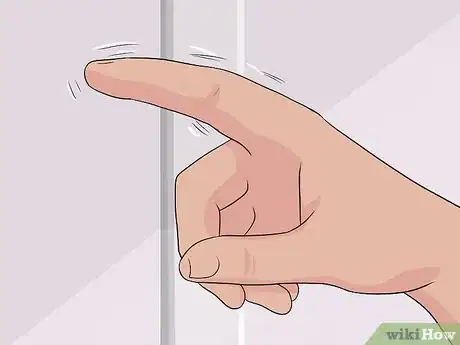

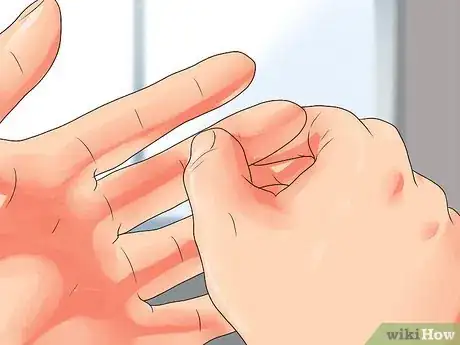


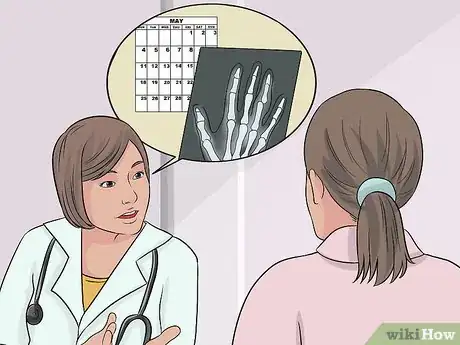






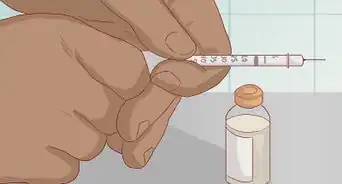
















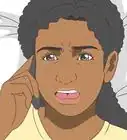






































Medical Disclaimer
The content of this article is not intended to be a substitute for professional medical advice, examination, diagnosis, or treatment. You should always contact your doctor or other qualified healthcare professional before starting, changing, or stopping any kind of health treatment.
Read More...